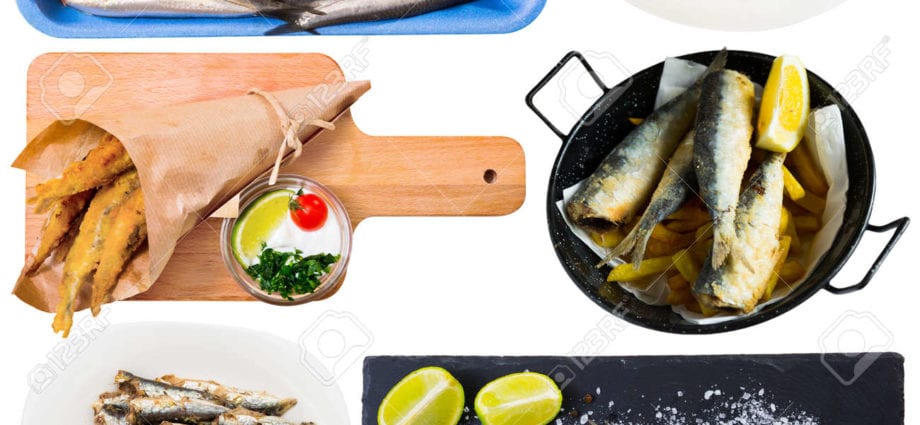Contents
How to distinguish anchovy from sprat and capelin
Anchovy Is a subspecies of the Mediterranean anchovy. Black Sea anchovy is smaller than anchovy, Azov anchovy is even smaller. It is very easy to recognize any anchovy (and hence a hamsu) in the face: the end (corner) of the mouth extends behind the back, if you count from the tip of the snout, the end of the eye. Specifically – like this:
Sprat and whitebaitso hotly recommended as an anchovy substitute belong to the family (and outwardly they are quite typical tiny herrings). For comparison, look at the picture:
Located on top capelin lies there for scale. This is followed by 2 copies anchovies and 2 copies of the Black Sea sprats (which I would personally translate as “delicate herring”). There are about ten types of kilka in total, and none of them is even a distant relative of the anchovy. However, the difference in taste is much more important.
The subtleties of the taste of anchovy and sprat
Anchovy much fatter than sprat, and the chemical composition of hamsy fats is very different from the chemical composition of sprat.
The second difference is in the cooking methods. Sprat sold mainly in spicy salting, cask or in preserves. Hamsa is salted without adding spices, so as not to distort its original taste. Here she is in the photo:
What is lightly salted anchovy and what is it eaten with
Occasionally you can find on sale fresh frozen hamsu, and then you can’t hesitate – defrost, then add not very much salt, mix properly in a container or glass jar, cover with parchment and put in the refrigerator for a week. The result is an embodied tenderness.
Anchovy in spite of the kinship with the hamsa, it is salted in a completely different way, not like sprat and not like hamsa. Firstly, manufacturers make a notorious and very strong salting. Secondly, anchovy an ambassador is a very long one, at least six months, or even a year. During this time, a radical process of protein fermentation takes place, and the tender anchovy flesh acquires a dense, rough texture. So, pretty hardened, anchovy is sold. So it is added to pizza, salad, c.
Personally, I prefer both spiced sprat and lightly salted hamsa in a gourmand way: to black coffee, carefully removing the fillet halves from the ridge with a fork tine. Or classically: under a glass of ice-cold vodka, when you can simply grab the fish with two fingers by the head and pull the flesh off the spine with your teeth. Or even so eat, with all the bones.
Hamsa stew
During the hamsa fishing season in Kerch, a dish called “stew” is popular – and it seems that it is not cooked anywhere else. Onion and bell peppers are sautéed in a deep frying pan, then a layer of anchovy 3-4 cm thick is spread, and tomatoes are crumbled on top – as much as you want. Sometimes finely chopped and fried carrots and (or) also a layer of raw potatoes, cut into thin circles, are added between the onions and the fish. All layers are salted; you can also cut a little hot pepper. Then a glass of water is poured into a frying pan, covered with a lid and put on low heat. After 20-25 minutes, the Kerch stew is ready. And when the inhabitants of Kerch say “stew”, they do not mean canned meat, but this.










